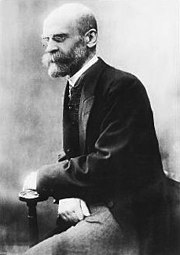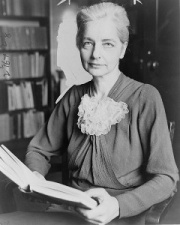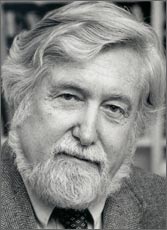Cultural Anthropology/Anth Perspective/More Theories
Contents
Cultural Anthropology Theories, continued
Functionalism
The roots of functionalism are found in the work of sociologists Herbert Spencer and Émile Durkheim. Functionalism considers a culture as an interrelated whole, not a collection of isolated traits. Like a human being has various organs that are interconnected and necessary for the body to function correctly, so society is a system of interconnected parts that make the whole function efficiently. The Functionalists examined how a particular cultural phase is interrelated with other aspects of the culture and how it affects the whole system of the society; in other words, cause and effect. The theory of Functionalism emerged in the 1920s and then declined after World War II because of cultural changes caused by the war. Since the theory did not emphasize social transformations, it was replaced by other theories related to cultural changes. Even so, the basic idea of Functionalism has become part of a common sense for cultural analysis in anthropology. Anthropologists generally consider interconnections of different cultural domains when they analyze cultures, e.g., the connections between subsistence strategies and family organization or religion.
The method of functionalism was based on fieldwork and direct observations of societies. Anthropologists were to describe various cultural institutions that make up a society, explain their social function, and show their contribution to the overall stability of a society. At the same time, this functionalist approach was criticized for not considering cultural changes of traditional societies.
Structural functionalism was a form of functionalism that arose in Great Britain. British anthropologist, A.R Radcliffe-Brown, was its most prominent advocate. In the structural functionalism approach, society, its institutions and roles, was the appropriate thing to study. Cultural traits supported or helped to preserve social structures. This approach had little interest in the individual, which contrasts with the approach advocated for by Branislaw Malinowski.
Culture and Personality
Attributed to anthropologists Ruth Benedict and Margaret Mead, the Culture and Personality school of thought drew on the work of Edward Sapir to explain relationships between childrearing customs and human behaviors in different societies. They suggested anthropologists could gain an understanding of a national culture through examination of individual personalities. There were two main themes in this theoretical school. One was about the relationship between culture and human nature. The other was about the correlation between culture and individual personality.
The theory of Culture and Personality also drew on Boas’ cultural relativism and Freud’s psychoanalysis about early childhood. If we premise that all humans are hereditarily equal, why are people so unique from society to society? The theoretical school answered this question by using Freud’s psychoanalysis: the differences between people in various societies usually stem from cultural differences installed in childhood. In other words, the foundations of personality development are set in early childhood according to each society’s unique cultural traits. Based on this basis, the theoretical school of Culture and Personality researched childrearing in different societies and compared the results cross-culturally. They described distinctive characteristics of people in certain cultures and attributed these unique traits to the different methods of childrearing. The aim of this comparison was to show the correlation between childrearing practices and adult personality types.
The Culture and Personality proponents were on the cutting edge when it emerged in the early 20th century. Using clinical interviews, dream analysis, life histories, participant observation, and projective tests (e.g., Rorschach), the culture and personality analysis of the correlation between childrearing customs and human behaviors was, at that time, a practical alternative to using racism explanations for analyzing different human behaviors. In fact, the culture and personality school was responsible for greatly limiting the number of racist, hierarchical descriptions of culture types common during the early to mid-20th century. This approach to understanding culture was instrumental in moving the focus to the individual in order to understand behaviors within a culture instead of looking for universal laws of human behavior.
Cultural Ecology
Ecology is a biological term for the interaction of organisms and their environment, which includes other organisms. Cultural ecology is a theoretical approach that attempts to explain similarities and differences in culture in relation to the environment. Highly focused on how the material culture, or technology, related to basic survival, i.e., subsistence, cultural ecology was the first theoretical approach to provide a causal explanation for those similarities and differences. Developed by Julian Steward in the 1930s and 1940s, cultural ecology became an influential approach within anthropology, particularly archaeology. Elements of the approach are still seen today in ethnoecology, political ecology, human behavioral ecology, and the ecosystems approach (Tucker 2013).
Using Steward’s approach, anthropologists compare cultures in order to determine what factors influence similar cultural development; in other words, similar adaptations. In cultural ecology, cultures, not individuals, adapt. This approach assumes that culture is superorganic, a concept Steward learned from Alfred Kroeber (see historical particularism).
Steward proposed that we could begin to understand these adaptations by first examining the cultural core, as this was the critical cultural component that dealt with the ability of the culture to survive. The cultural core was comprised of the technology, knowledge, labor, and family organization used to collect resources from the environment (Tucker 2013). He then thought that examination of behaviors associated with the cultural core was necessary, which included the organization of labor. Thirdly, Steward advocated for examining how social institutions and belief systems were impacted by subsistence-related behaviors. According to the cultural ecology school of thought, cultural similarities were explained by adaptations to similar environmental conditions, causing the approach to be labeled environmental determinism. Cultural changes were due to changing environmental conditions. Since environmental changes were not predictable, cultures changed in multiple directions. Cultures that may have been similar at one point might become dissimilar if environmental conditions changed. Conversely, cultures that were dissimilar could become similar. This idea of multi-directional change is called multilinear evolution and is one of the major departures from earlier evolutionary explanations of culture. Leslie White was another proponent of cultural ecology, although he was focused primarily on how cultures harvested energy from the environment and how much energy they used.
Cultural Materialism
Materialism is one of the major anthropological perspectives for analyzing human societies. It incorporates ideas from Marxism, cultural evolution, and cultural ecology. Materialism contends that the physical world impacts and sets constraints on human behavior. The materialists believe that human behavior is part of nature and therefore, it can be understood by using the methods of natural science. Materialists do not necessarily assume that material reality is more important than mental reality. However, they give priority to the material world over the world of the mind when they explain human societies. This doctrine of materialism started and developed from the work of Karl Marx and Friedrich Engels. Marx and Engels presented an evolutionary model of societies based on the materialist perspective. They argued that societies go through the several stages, from tribalism to feudalism to capitalism to communism. Their work drew little attention from anthropology in the early twentieth-century. However, since the late 1920s, anthropologists have increasingly come to depend on materialist explanations for analyzing societal development and some inherent problems of capitalist societies. Anthropologists who heavily rely on the insights of Marx and Engels include neo-evolutionists, neo-materialists, feminists, and postmodernists.
Cultural materialists identify three levels of social systems that constitute a universal pattern: 1) infrastructure, 2) structure, and 3) superstructure. Infrastructure is the basis for all other levels and includes how basic needs are met and how it interacts with the local environment. Structure refers to a society’s economic, social, and political organization, while superstructure is related to ideology and symbolism. Cultural materialists like Marvin Harris contend that the infrastructure is the most critical aspect as it is here where the interaction between culture and environment occurs. All three of the levels are interrelated so that changes in the infrastructure results in changes in the structure and superstructure, although the changes might not be immediate. While this appears to be environmental determinism, cultural materialists do not disclaim that change in the structure and superstructure cannot occur without first change in the infrastructure. They do however claim that if change in those structures is not compatible with the existing infrastructure the change is not likely to become set within the culture.
Symbolic and Interpretive Anthropology
The theoretical school of Symbolic and Interpretive Anthropology assumes that culture does not exist beyond individuals. Rather, culture lies in individuals’ interpretations of events and things around them. With a reference to socially established signs and symbols, people shape the patterns of their behaviors and give meanings to their experiences. Therefore, the goal of Symbolic and Interpretive Anthropology is to analyze how people give meanings to their reality and how this reality is expressed by their cultural symbols. The major accomplishment of symbolic anthropology has been to turn anthropology towards issues of culture and interpretation rather than grand theories.
Symbolic and Interpretive Anthropology emerged in the 1960s when Victor Turner, Clifford Geertz, and David Schneider were at the University of Chicago and is still influential today. Symbolic and Interpretive Anthropology does not follow the model of physical sciences, which focus on empirical material phenomena, but is literary-based. This does not mean that Symbolic and Interpretive anthropologists do not conduct fieldwork, but instead refers to the practice of drawing on non-anthropological literature as a primary source of data. The Symbolic and Interpretive Anthropologists view culture as a mental phenomenon and reject the idea that culture can be modeled like mathematics or logic. When they study symbolic action in cultures, they use a variety of analytical tools from psychology, history, and literature. This method has been criticized for a lack of objective method. In other words, this method seems to allow analysts to see meaning wherever and however they wish. In spite of this criticism, Symbolic and Interpretive Anthropology has forced anthropologists to become aware of cultural texts they interpret and of ethnographic texts they create. In order to work as intercultural translators, anthropologists need to be aware of their own cultural biases as well as other cultures they research.There are two schools of thought within Symbolic and Interpretive Anthropology. The British school was interested in how societies maintained cohesion and is illustrated by the work of Victor Turner and Mary Douglas. The American school is exemplified by Clifford Geertz and Sherry Ortner and was focused on “how ideas shaped individuals subjectivities and actions” (Johnson 2013: 842). An important contribution of Symbolic and Interpretive anthropologists, specifically Clifford Geertz, is “thick description,” which encourages rich descriptions and explanations of behaviors with an end goal of understanding their cultural significance. Geertz borrowed this concept from Gilbert Ryle, an Oxford philosopher. The classic example of thick description is the difference between a wink and a blink. A blink is an involuntary twitch (thin description) while a wink is a conspiratorial signal to another person (thick description). The physical movements are identical, but the meaning is different.
Postmodernism
Postmodernism is a theoretical approach that arose in the 1980s to explain an historical period, post-modernity, which is generally accepted to have begun in the late 1960s and early 1970s. This is a period related to the Cold War and social upheaval in many parts of the world. The postmodernism theoretical approach is difficult to define and delineate. It is generally scoffed at in the Natural Sciences, debated in the Social Sciences, and more favorably accepted within the Humanities. In the past, debates on the merits of the postmodern approach have created divisions among faculty and derision between disciplines. The postmodern approach challenges the “dominating and bullying nature of science and reason” and focuses on “…splitting the truth, the standards, and the ideal into what has been deconstructed and into what is about to be deconstructed, and denying in advance the right of any new doctrine, theory, or revelation to take the place of the discarded rules of the past” (Cooke 2006: 2014). It is the academic equivalent of the social clamor against the establishment that arose in the 1960s and 1970s. Postmodernists claim that it is impossible for anyone to have objective and neutral knowledge of another culture. This view comes from the notion that we all interpret the world around us in our own way according to our language, cultural background, and personal experiences. In other words, everybody has their own views based on his or her social and personal contexts. Because of this aspect of human nature, anthropologists can never be unbiased observers of other cultures. When postmodern anthropologists analyze different societies, they are sensitive to this limitation. They do not assume that their way of conceptualizing culture is the only way. The postmodernists believe that anthropological texts are influenced by the political and social contexts within which they are written. Therefore, it is unreasonable when authors try to justify their interpretations and underlying biases by using the concept of objectivity. The postmodernists claim that the acceptance of an interpretation is ultimately an issue of power and wealth. In other words, we tend to legitimize particular statements represented by those with political and economic advantage. In order to heighten sensitivity towards those who are not part of mainstream culture, the postmodernists often promote underrepresented viewpoints, such as those of ethnic minorities, women, and others. Postmodernists also re-introduced a focus on individual behavior, which has become known as agency theory. Agency approaches examine how individual agents shape culture. Postmodern anthropologists gave other anthropologists an opportunity to reconsider their approaches of cultural analysis by ushering in an era of reflexive anthropology. The anthropologist tries to become sensitive to his or her unconscious assumptions. For example, anthropologists now consider whether they should include in ethnographies different interpretations of culture other than their own. Furthermore, anthropologists need to determine their own standards for choosing what kind of information can be counted as knowledge. This reflection leads anthropologists to enrich their work. At the same time, the challenges by postmodernists often result in backlash from those who feel their understandings are threatened. Some anthropologists claim that the postmodernists rely on a particular moral model rather than empirical data or scientific methods. This moral model is structured by sympathy to those who do not possess the same privilege that the mainstream has in Western societies. Therefore, postmodernism will undermine the legitimacy of anthropology by introducing this political bias. Another typical criticism on postmodernism comes from the fear of extremely relativistic view. Such critics argue that postmodernism will lead to nihilism because it does not assume a common ground of understanding. Some opponents claim that postmodernism will undermine universal human rights and will even justify dictatorship. Postmodernism is an ongoing debate, especially regarding whether anthropology should rely on scientific or humanistic approaches.
Explore: Learn more about the anthropologists
Ruth Benedict: http://www.americanethnography.com/article.php?id=7
Mary Douglas: http://www.theguardian.com/news/2007/may/18/guardianobituaries.obituaries
Clifford Geertz: http://www.nytimes.com/2006/11/01/obituaries/01geertz.html?pagewanted=all
Marvin Harris: http://www.nytimes.com/2001/10/28/us/marvin-harris-74-is-dead-professor-was-iconoclast-of-anthropologists.html
Branislaw Malinowski: http://www.nndb.com/people/320/000099023/
Margaret Mead: http://www.interculturalstudies.org/Mead/biography.html
Sherry Ortner: http://www.sscnet.ucla.edu/anthro/faculty/ortner/
A. R. Radcliffe-Brown: http://www.nndb.com/people/318/000099021/
David Schneider: http://www.nytimes.com/1995/11/01/us/david-schneider-a-giant-of-cultural-anthropology-is-dead-at-76.html
Julian Steward: http://www.browsebiography.com/bio-julian_steward.html
Victor Turner: http://www.indiana.edu/~wanthro/theory_pages/Turner.htm
Leslie White: http://www.britannica.com/EBchecked/topic/642054/Leslie-A-White
References
Brown, Curtis. “Functionalism.” In International Encyclopedia of the Social Sciences, Vol. 3, edited by William A. Darity, Jr., 231-233. Detroit: Macmillan Reference USA, 2008.
Buzney, Catherine and Jon Marcoux. Cultural Materialism. University of Alabama Department of Anthropology Anthropological Theories: A Guide Prepared by Students for Students. Accessed March 5, 2015. http://anthropology.ua.edu/cultures/cultures.php?culture=Cultural%20Materialism.
Cooke, Bill. “Postmodernism.” In Encyclopedia of Anthropology, Vol. 4, edited by H. James Birx, 1912-1915. Thousand Oaks: SAGE Reference, 2006.
Graber, Robert Bates. “Social Evolution.” In 21st Century Anthropology: A Reference Handbook, Vol. 2, edited by H. James Birx, 576-585. Thousand Oaks, CA: SAGE Reference, 2010.
Harris, Marvin and Orna Johnson. 2007. Cultural Anthropology, 7th edition. Boston: Pearson.
Harrison, Anthony Kwame. “Thick Description.” In Theory in Social and Cultural Anthropology: An Encyclopedia, Vol. 2, edited by R. Jon McGee and Richard L. Warms, 860-861. Thousand Oaks, CA: SAGE Reference, 2013.
Johnson, Michelle C. “Symbolic and Interpretive Anthropology.” In Theory in Social and Cultural Anthropology: An Encyclopedia, Vol. 2, edited by R. Jon McGee and Richard L. Warms, 841-846. Thousand Oaks, CA: SAGE Reference, 2013.
Kelly, Petrina, Xia Chao, Andrew Scruggs, Lucy Lawrence, and Katherine Mcghee-Snow. “Culture and Personality.” The University of Alabama Department of Anthropology, Anthropological Theories: A Guide Prepared by Students for Students. Accessed March 5, 2015. http://anthropology.ua.edu/cultures/cultures.php?culture=Culture%20and%20Personality.
Lukas, Scott A. “Postmodernism.” In Theory in Social and Cultural Anthropology: An Encyclopedia, Vol. 2, edited by R. Jon McGee and Richard L. Warms, 639-645. Thousand Oaks, CA: SAGE Reference, 2013.
Margolis, Maxine L. “Cultural Materialism.” In Theory in Social and Cultural Anthropology, Vol. 1, edited by R. Jon McGee and Richard L. Warms, 147-149. Thousand Oaks, CA: SAGE Reference, 2013.
Sullivan, Gerald. “Culture and Personality.” In Encyclopedia of Anthropology, Vol. 2, edited by H. James Birx, 641-645. Thousand Oaks, CA: SAGE Reference, 2006.
Tucker, Bram. “Cultural Ecology.” In Theory in Social and Cultural Anthropology: An Encyclopedia, Vol. 1, edited by R. Jon McGee and Richard L. Warms, 142-147. Thousand Oaks, CA: SAGE Reference, 2013.
West, Barbara. “Functionalism.” In Encyclopedia of Anthropology, Vol. 3, edited by H. James Birx, 1012-1013. Thousand Oaks, CA: SAGE Reference, 2006.



